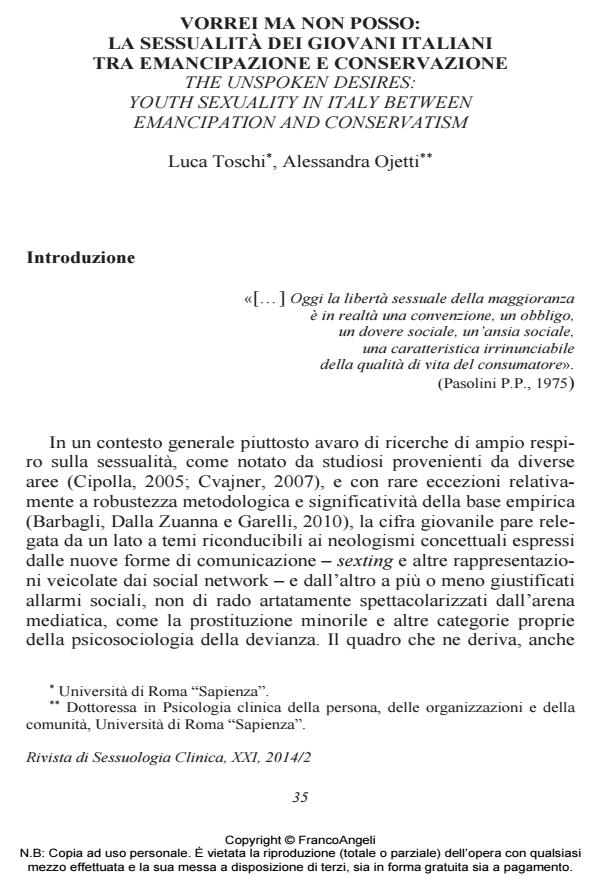The unspoken desires: youth sexuality in italy between emancipation and conservatism
Journal title RIVISTA DI SESSUOLOGIA CLINICA
Author/s Luca Toschi, Alessandra Ojetti
Publishing Year 2014 Issue 2014/2
Language Italian Pages 21 P. 35-55 File size 95 KB
DOI 10.3280/RSC2014-002002
DOI is like a bar code for intellectual property: to have more infomation
click here
Below, you can see the article first page
If you want to buy this article in PDF format, you can do it, following the instructions to buy download credits

FrancoAngeli is member of Publishers International Linking Association, Inc (PILA), a not-for-profit association which run the CrossRef service enabling links to and from online scholarly content.
The postmodern representation of youth sexuality tells of new generations in appearance suited to an unconventional and disengaged relationality, exposed to the risks of occasional experimentation. In fact, against a disclosure of common sense too often tainted by media overexposure of private behavior - which not rarely indulges even the scientific debate - young Italians experiences of intimacy occur prevalently traditionalist and sensitive to old and new forms of social control. The survey aims to resize the libertarian mythology built around the postmodern use of intimate relationships by new generations, analyzing emerging patterns in terms of attitudes, behaviors and specific sexual practices. Were interviewed 258 subjects (114 M, 144 F) enrolled on psychological area courses (mean age 24.3 years, SD 3.09). The issues investigated are: personal data and family of origin; religion and leisure; school, college and friendships; emotions and relationships; opinions and attitudes; pleasure, practice and experimentation. Our results confirm lack of association between representations (individual judgments) and actions (relational biography), a persistent gender differentiation - especially in terms of ethical reprobation and expectations - and strategies in testing sexuality that are substantially filtered by traditional order and legitimate social roles (family, affective couple).
Keywords: Youth, relationality, affectivity, sexuality, social patterns, sexual practices.
Luca Toschi, Alessandra Ojetti, Vorrei ma non posso: la sessualità dei giovani italiani tra emancipazione e conservazione in "RIVISTA DI SESSUOLOGIA CLINICA" 2/2014, pp 35-55, DOI: 10.3280/RSC2014-002002